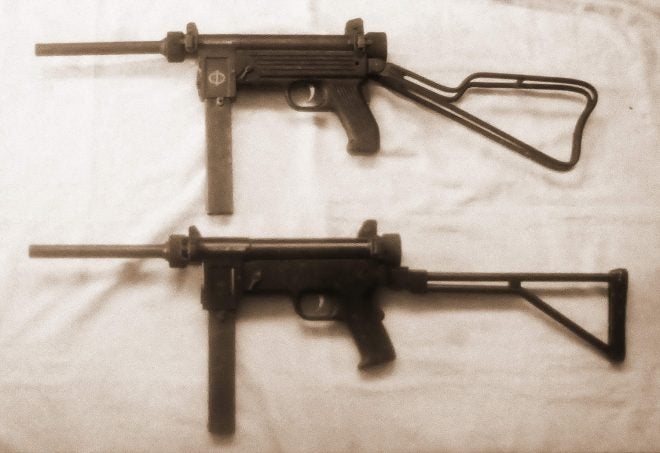The next evolutionary step in 9x19mm submachine gun design by Itajubá Factory’s Prototypes Workshop was very trivial, indeed, and took the form of replacing the initial, somewhat clumsy, shaped-wire folding stock with a tubular model somewhat based on the model used in the PARA-FAL rifle. Offering a much firmer shoulder-firing support, it folded very neatly to the right side of the FI/70, which otherwise remained mechanically unchanged.
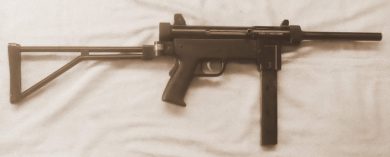
This FI/70 prototype marked “3” on the magazine housing displays de new folding tubular stock, while keeping the basic overall configuration of earlier examples.
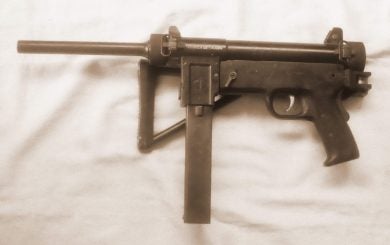
The same specimen seen from the left side, stock folded. It may be noticed that the external finish of the wooden lower receiver is smooth, rather than being grooved as in the earlier prototypes. The fire selector switch (S, R, A) near the magazine housing is evident, as is the contour of the grip safety lever.
By the first half of 1978, or so, the guys at the Prototypes Workshop decided to give the FI/70 a second look, the emerging design being called the MOD. C.E.70. Although bearing a general external look similar to the first prototypes, it did incorporate significant changes, including the repositioning of the reciprocating cocking handle to the left side and giving the actuating knob an elevated profile so as to make it more ambidextrous in nature. The fire selector took the form of a small transversal button situated near the forward end of the trigger guard: when pressed to the left, it locked the firing mechanism; to the right, it allowed automatic fire (the gun was full-auto-only). The magazine catch became a small inward-pressing button on the right side of the magazine housing, while the bolt-locking grip safety lever was preserved. Basic barrel and overall dimensions were also maintained from the previous examples, but the bolt’s weight and travel distance within the cylindrical receiver were slightly increased in an effort to reduce the gun’s innate elevated cyclic rate of fire. A figure of around 900 rpm was eventually achieved, but, it was still too high.

Although, externally, the MOD.C.E.70 prototype (apparently, the “014”) seen here looked pretty much like earlier FI/70s, it did incorporate significant operation changes.
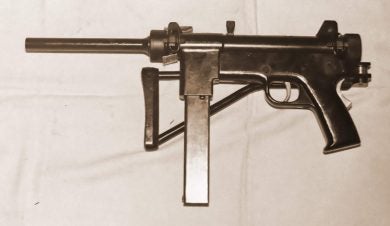
Left side view of the same specimen with the PARA-FAL-inspired tubular stock in the folded position.
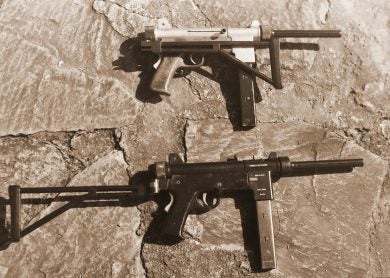
A very rare side-by-side photo of an FI/70 prototype (top) and a MOD. C.E.70 specimen, both fitted with the same type of foldable tubular stock.
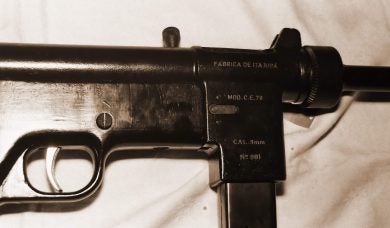

A closer up view of the first prototype with the markings (top to bottom) FÁBRICA DE ITAJUBÁ, MOD.C.E.70, CAL. 9mm, No. 001. Bottom photo of same was taken recently at IMBEL’s Museum in Itajubá, Minas Gerais State.
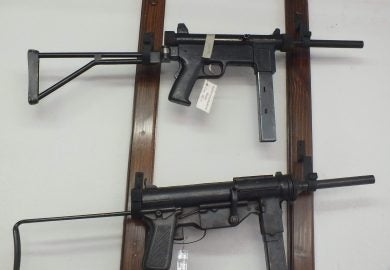
Another 9x19mm C.E.70 prototype seen alongside a .45 ACP M3A1 Grease Gun. Believe it or not, this and the “001” example illustrated above are the ONLY Fábrica de Itajubá subgun prototypes on display at the Museum! Regrettably, indeed…

I just couldn’t resist posting this photo found in a historical Itajubá website (https://gloriampm.blogspot.com.br/2014/04/pacatito-antiga-fabrica-de-armasimbel.html): what appears to be a C.E.70 or an earlier FI/70 prototype in the hands of a young fashion model in an informal event in that city, date uncertain. Not much of trigger discipline, but who cares?
Higher-res photos? Sure: https://imgur.com/a/w7lxg
 Your Privacy Choices
Your Privacy Choices
